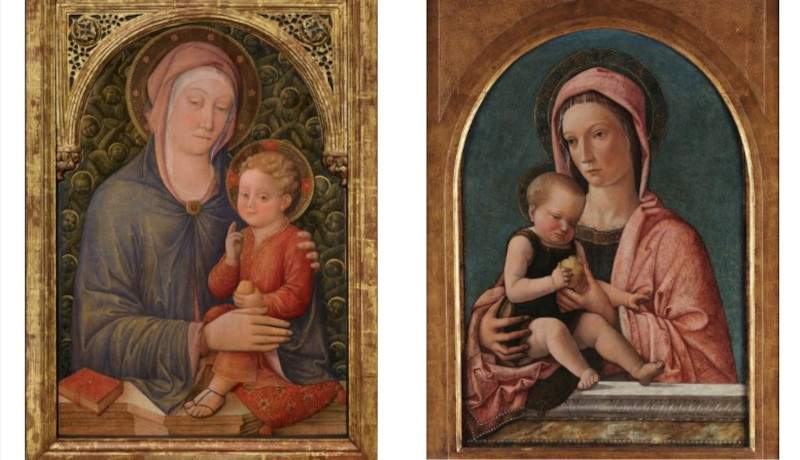Bellini compared. The Trivulzio Madonna goes on a trip to the Gallerie dell'Accademia in Venice.
From November 5, 2022 to March 12, 2023, the Gallerie dell’Accademia in Venice will exhibit two masterpieces by Jacopo and Giovanni Bellini in comparison: the Madonna and Child by Giovanni Bellini from the Pinacoteca del Castello Sforzesco in Milan and Jacopo Bellini’s Madonna and Child Blessing from the Gallerie dell’Accademia.
The exchange of important works with Italian and foreign museums has given the Gallerie dell’Accademia in Venice the opportunity to create new narratives, weave new stories with paintings from the permanent collection, talk about iconography, provenance, and style.
Now the guest of honor is an early painting by Giovanni Bellini better known as Madonna Trivulzio; the work will be exhibited alongside Jacopo Bellini’s Madonna with Blessing Child and Cherubs, which is part of the permanent collection, to which the recently completed restoration has restored full legibility in formal values and execution technique. Note the brilliance that has emerged from the blues, consisting of azurite in the cherubs and most likely ultramarine blue in the Virgin’s mantle, from the reds painted in vermillion and lacquer, to which the shell-gold highlights lend a crackling sparkle. The two works will be exhibited in Room III on the second floor, where other paintings made by the Bellinis, the most important family business in 15th-century Venice, from the 1940s to the 1960s, are brought together: the works here by Giovanni and Gentile testify in different ways and degrees to the path they set out on in order to break free from the more archaic language of their father Jacopo, opening up to the novelties of Renaissance language elaborated in Padua by Francesco Squarcione and Andrea Mantegna, based on the stimuli introduced there by Donatello.
“Through two absolute masterpieces,” stresses the director of the Gallerie dell’Accademia Giulio Manieri Elia, “an intense artistic dialogue between great masters is generated; the two Madonnas with Child compared exemplify a crucial passage in the history of Western art experienced by a father and a son, two generations, two artistic traditions. The father still substantially tied to his late Gothic training and the son launched toward an emerging Renaissance. An unmissable opportunity, then, also to rediscover Jacopo’s panel in a riot of color and gold, reintegrated with the restoration just completed.”
“With this initiative,” the director adds, “the Gallerie dell’Accademia resumes its collaboration with national and international museums and institutions with the aim of intensifying ties and relations with these realities, but also proposing significant comparisons and artistic dialogues between masterpieces belonging to their respective collections.”
Initiatives such as this, which are part of the broader framework of the Nelle Gallerie program, will allow the Gallerie dell’Accademia to share topics of study to delve into unpublished aspects to be investigated, but also to offer relationships that arise from the encounter of the works, protagonists of every reflection between past and present.
Pictured is Jacopo Bellini’s Madonna and Child with Blessing and Cherubs (c. 1455; Venice, Gallerie dell’Accademia) on the left; Giovanni Bellini’s Madonna Trivulzio (c. 1460; Milan, Pinacoteca del Castello Sforzesco) on the right.
 |
| Bellini compared. The Trivulzio Madonna goes on a trip to the Gallerie dell'Accademia in Venice. |
Warning: the translation into English of the original Italian article was created using automatic tools. We undertake to review all articles, but we do not guarantee the total absence of inaccuracies in the translation due to the program. You can find the original by clicking on the ITA button. If you find any mistake,please contact us.





























